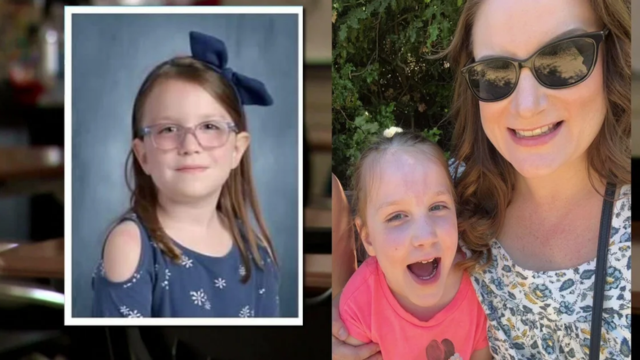Woodland — Sacramento’s three-part investigative series digs deeper into claims that the Woodland Joint Unified School District (WJUSD) is failing its special education students. These problems at the local level are a sign of a bigger problem in education across the country.
Part one talks about why a special education advocate in the area and a parent in the district think that kids’ federal education rights are being violated. We also talk about what the leaders of WJUSD and the California Department of Education said in reaction.
This second story in the series is told from the points of view of two past WJUSD teachers who talk about what it was like to teach. We also explain why government funding has never fully supported special education across the country, even though the Individuals with Disabilities Education Act was passed 50 years ago. This is because lawmakers are still looking for a nationwide fix.
They talk about what they’ve learnt.
Two teachers who used to work at WJUSD did talk to CBS13 about their classrooms after they quit, but they asked to remain anonymous.
Both of them say that their stories show why a public school system that isn’t properly funded and poorly run by local districts hurts teachers as well as kids.
In this story, CBS13 decided to only name them as Teacher 1 and Teacher 2. Both of them are still teachers at other school districts in the area and are afraid of being punished for speaking out.
During the 2023–2024 school year, Teacher 1 filled in as a certified teacher at Gibson Elementary School in a special education classroom.
She said that some students had become angry and disruptive in the classroom, which made things tense. The teachers were trying to make things less dangerous.
It was Teacher 1 who said that kids in this special education classroom attacked her at the time. She later found out that this had happened before.
“Two different students hit me in the space of about 15 minutes.” “No one told me that someone had been hurt in that class,” Teacher 1 said.
It was reported by Teacher 1 that she and the paraprofessionals in the classroom had called for help several times before the attack, but no one came.
“I didn’t even see it coming—I’m a second-degree black belt.” From where I was, I think he cocked his hand, but I couldn’t see it. I just fly back all of a sudden. “He hit the bridge of my nose with his palm,” Teacher 1 said. After the fact, I found out that I was the second person that year to get a concussion from the same student’s palm hit. “I just don’t want anyone else to get hurt.”
Someone else in the class pulled her hair and punched and kicked her, she says.
Teacher 1 says she found out she had a headache and a neck sprain at the emergency room.
“The whole process of how to report an injury was not followed at all,” a teacher said. “I was hit in the head, so it’s hard to blame me.” The adults in that situation did not do what the school system says you should do. I don’t understand why they did that.
She finally filled out a digital form through the district to report what happened. She believes that nothing would have been done if she hadn’t kept following up with staff.
That meeting with district leaders and HR staff was “meaningless” and “inauthentic,” Teacher 1 said. “I made it clear that I blamed the district for what happened, not the students with special needs.”
“You should have told me that two kids are violent in that class and I would have known to distance myself,” a teacher said. “And they wouldn’t say that was a real problem.” I’m no longer going to work in Woodland. Since my experience was so bad, I don’t think I’ll ever work in the area where I live, which is too bad. I don’t want to sue or cause trouble. A bigger worry for me is that people are getting hurt, and it looks like you don’t have the processes and rules in place to keep them safe.
Teacher 1 and Teacher 2 had very different experiences at different schools. However, they both think these stories show a bigger issue in the district and in education in general.
“As a teacher, you sometimes have to balance, is this worth losing my job?” What Teacher 2 said. “When you advocate for your students, that can sometimes not work out well for you.”
According to Teacher 2, she had been teaching for ten years and was in her first year of teaching a special education preschool class at a WJUSD school.She told CBS13 that.
“After this job with Woodland Joint Unified, did you consider quitting teaching entirely?” I asked.
Teacher 2 said, “I did, but my heart is really in the service.”
Teacher 2 said it was clear right away that one of her kids had trouble moving around and needed more one-on-one help.
As the parent of a child with special needs, Teacher 2 told the school that she had data to back up the fact that this child would benefit from more help in the classroom. Coach 2 said that she again pushed for more help for that kid at their IEP meeting, which stands for “individualised education program.”
She says that the people in charge of the district made it sound like the problem was her fault for not managing her classroom well. After that, she says she was fired because of it.
“They did agree to the student having one-on-one time, so I felt good about that.” “But I was fired, told not to come back, and told I wasn’t a good cultural fit,” Teacher 2 said. “To be honest, I cried. It made me sad because I liked the kids and staff I worked with a lot. It’s too bad that our system makes it so that teachers who stand up for their students are shunned and left alone, especially in schools that are having a hard time.
A spokesperson for WJUSD wouldn’t say anything about Teacher 1’s claims that the school didn’t do enough to keep her safe or the claim that Teacher 2 was fired in retaliation. In part 1 of this story, you can read the district’s full response to CBS13.
System that is “broken” and bigger than Woodland
These people want to make one point clear: our schools need help, and this isn’t just a WJUSD problem.
Founder and CEO of the Sacramento Autistic Spectrum and Special Needs Alliance (SASSNA), Dave Gaines, said, “This is a local issue that comes from a national issue.”
SASSNA is a support group that helps families in the area with special needs kids find their way around school and social services. They even go to the kids’ IEP meetings to help them get the help they need.
“The bottom line is that the way that students with disabilities are taught in public schools across the country is not working.” It mostly comes from two things. There isn’t enough money for schools—a lot of it. This has been going on for many years. Also, a lack of people,” Gaines said. “You either lower the standards to go down to what the resources are, or you have to raise the resources to meet the standards.”
The goal of a group of lawmakers from both parties in Congress is to do just that. They include Sen. Adam Schiff and Sen. Alex Padilla of California, who were introduced in early April.
“We are really breaking what we promised to do,” Sen. Schiff said in a video shared on social media. “That means that it puts a lot of pressure on the school districts to provide important and necessary services.”
It’s been 50 years since the federal Individuals with Disabilities Education Act (IDEA) of 1975 was passed, but a group of politicians is reintroducing a bill to fully fund special education. The new bill is called the IDEA Full Funding Act.
The federal government promised to pay 40% of the cost of special education for each student in the original IDEA Act. Funding is less than 12% right now.
The Congress says that the national shortfall is more than $38 billion this school year.
“IDEA, it has never had enough money, which is what led to this.” Schools do their best and try their hardest. It’s too bad that their best isn’t meeting the needs of the kids, Teacher 2 said.
The IDEA Full Funding Act would require that spending on special education always go up.
It’s not clear if Congress will be able to finally pass it, since the Trump administration is focused on cutting costs and even shutting down the Department of Education.
“President Trump’s cruel dismantling of the Department of Education (DOE) is putting millions of students with disabilities at risk of losing essential IDEA funding,” said Sen. Padilla.
It is said by the Trump administration that overall spending on education has gone up more than 245% since the 1970s, but there hasn’t been much progress to show for it. This is the reason why President Trump said in March in an executive order, “In the end, the Department of Education’s main functions can and should be returned to the States.”
CNN asked the White House and the DOE what they thought about the budget cuts and how the government plans to continue to help the kids who need it the most. After all, data from California shows that it can cost three times as much to teach a child who needs special help.
The DOE told look at what Secretary Linda McMahon said on CNN, where she said things like:
“We need to make sure that the funding has a clear path. The funding will keep going.” However, the states are free to spend the money however they see fit. To hire more teachers and pay them more so that we can take care of our kids with special needs.
Gaines said that something needs to be done about the dire state of special education across the country. He said that staffing and budget problems that have been going on for decades need to be fixed.
“This is about the future, the well-being and, in some cases, the lives of children with disabilities,” Gaines added.
The last story in this three-part series will air on Wednesday at 5 p.m. and 10 p.m.
The story goes into detail about a civil lawsuit against WJUSD. One mom says the district did not do enough to protect her disabled daughter, who was sexually assaulted by another student in a Pioneer High School bathroom.




